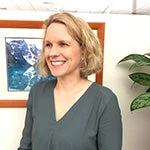
Sometimes the impacts of disasters seem difficult to predict, such as when the heavy snow that set off deadly avalanches in Afghanistan this winter also damaged transmission lines, disrupting the flow of electricity imported from Uzbekistan and Tajikistan and resulting in power outages in Kabul. Other times the consequences seem almost inevitable, for example the likelihood of a devastating earthquake in the Ganges Basin of India, Nepal and Bangladesh within our lifetime.
There are, however, tools and models that allow us to determine the potential impacts of a disaster before they happen, and provide decision-makers with information they can use to reduce the potential impact.
Great strides have been made in the last decade in developing technological solutions to understand and analyze disaster risk. Increasingly, organizations are supporting open-source software development and philosophies, such as the GeoNode, InaSAFE, QGIS, or employ crowdsourcing and participatory mapping techniques to collect data on buildings, roads, and public buildings like schools and health clinics, both before a disaster strikes (e.g. Participatory Mapping in Malawi, Jakarta South Asia) and in its aftermath (e.g. 2010 Haiti, 2013 Typhoon Haiyan).
More recently, risk visualization tools have been developed that allow homeowners to check their flood risks in the United Kingdom, visualize dramatic coastal changes in Louisiana, USA, through timelapse, and most recently a new tool to show the potential losses from floods globally, considering investment in flood protection and climate change scenarios.
Despite these advances, there remain substantial gaps preventing those in developing countries to access these data and tools. In particular, one increasingly recognized global challenge is how to create tools and methodologies that are specifically developed for practitioners on the ground and bridge the gap between technology and the final user. To tackle this head on, we need to be open to new ideas and collaborations and partnerships. We need to build on the exciting developments, and continue to push for “positive disruptive” innovation.
That is why I am excited about the launch of a Challenge Fund, on March 16th at the World Conference on Disaster Risk Reduction.
The Global Facility for Disaster Reduction and Recovery (GFDRR) and the UK Department for International Development (DFID) have partnered to launch a competitive challenge fund to support projects that propose new ways to make risk data and information products and services accessible to decision makers, especially those in the poorest and most vulnerable countries.
Project teams will be asked to respond to challenges, including issues of access to high resolution digital elevation models, collection of missing data, new approaches to modeling risk, and innovative approaches to communicating risk information to different stakeholders. They will even be able to submit their own problem statement and solution under a “wild card” thematic area.
This Fund is a great opportunity for organizations to access seed funding for pilot projects and contribute to building a better understanding of disaster risk and working towards a more resilient future. We look forward to your applications.
Image: GFDRR and the American Red Cross used GeoNode to launch an online data sharing platform to track damage in the aftermath of Typhoon Haiyan (Yolanda) in the Philippines


Join the Conversation